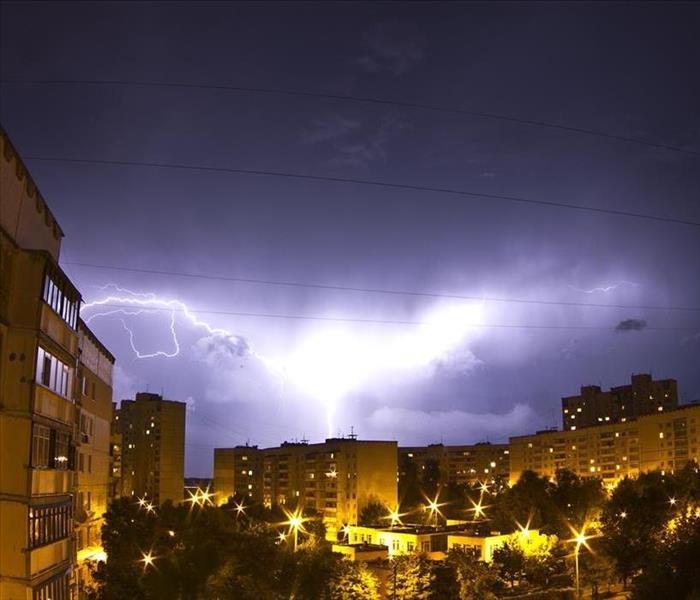How to Avoid Water Damage and Mold During Heavy Rain
12/12/2022 (Permalink)
If there are heavy rains and your home has undiscovered leaks, you will likely have a mold problem soon.
Rainwater damage and mold go hand in hand. Mold may sound like a rare issue found in only the dingiest of homes, but mold lives everywhere. Even in the cleanest spaces, mold spores can be found floating around. When it comes to mold in your home, the key is to ensure mold levels stay in an acceptable range. It is impossible to eliminate mold entirely but if one area gets too damp, mold can fester at elevated levels without your knowledge. Mold becomes problematic in these concentrated, unseen situations.
The Good and Bad Things About Mold
Though it may sound surprising, mold can be a good thing in specific settings. In nature, mold breaks down organic materials to feed and nourish the soil. Mold makes some cheese taste great too. If you notice mold in your home, don’t freak out! Mold is natural and fixable.
Mold only becomes a problem when it grows excessively. As we said, all it takes for a mold infestation to grow is a damp, dark area. Often caused by heavy rains, humidity, or leaks, excessive mold can become hazardous to your home and family. The key is to remain diligent and take preventive measures before the rainy season approaches to fend off water damage and mold.
Water and mold damage restoration
If mold infests your home, it is important to understand the water and mold damage restoration process. The first thing that should be on the top of your list - hire an expert! Mold is not something to mess around with. To solve the problem efficiently and effectively, you will need a qualified restoration company to handle your water and mold damage restoration.
Water and mold damage restoration includes a wide spectrum of services and solutions. In some cases, you may be able to clean mold problem areas to resolve the infestation. Sometimes, mold damage requires more intensive solutions. Additionally, mold restoration may require testing for asbestos and lead. It’s important to get these done before the rain causes more serious damage.
To determine which route to take in getting rid of mold in your home, contact a professional to inspect and give you advice. Before you can begin the remediation and treatment process, it is essential to get the affected space tested. A certified mold inspector can take samples from your home and get them tested in a laboratory. Without taking this step, it’s impossible to say if you have a mold problem or not.
Mold damage from water leaks
As we enter the rainiest season of the year, it is important to be on the lookout for mold damage. Though rainy days can feel cozy and relaxing, they may be causing serious, underlying issues in your space. If your home leaks in any place, the rain can saturate building materials and cause mold to grow. After all, as we mentioned before, all it takes is a damp place for mold spores to latch on and thrive.
To protect your home most effectively, it’s crucial to think about moisture itself rather than mold. To put it in simple terms, moisture is the illness and mold is just a symptom. You can remove mold all you want but if the leak or moisture source is not diagnosed, the pesky mold will keep coming back. Before the rainy season approaches, ensure your gutters are intact and clear of debris.
Glendale, California’s #1 Water and Mold Damage Experts
If the rain comes before you get the chance to perform these prevention tips, make sure to inspect your home once the rain stops. Look for wet areas, moisture or other signs of leaks. Checking for visible mold from water leaks will give you peace of mind and confirmation that there is no serious problem. We recommend calling in an expert to confirm that your home is waterproof and mold-free. Give SERVPRO® of Central Glendale a call now at 818-246-2200 to see how we can help you today.






 24/7 Emergency Service
24/7 Emergency Service
